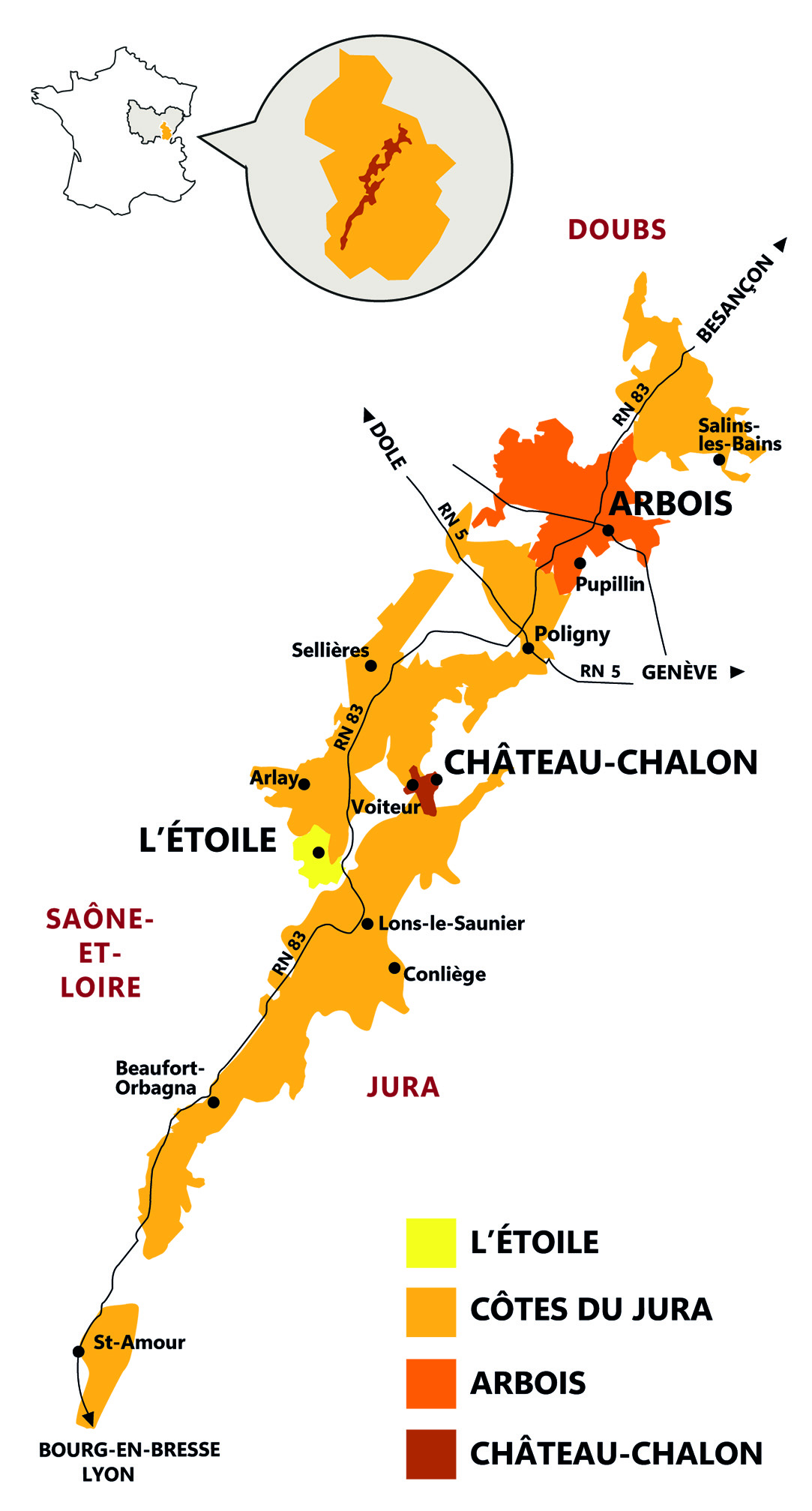
CHARDONNAY
Côtes du Jura


Grape variety
The Chardonnay grape variety, originating from Burgundy but cultivated in the Jura since the 10th Century, has become a native of the region. Its great adaptability makes it the most prominent grape variety today, especially on limestone and light soils.
A touch of the local grape Savagnin (10%) is also part of this cuvée. Typical of the Jura region, its less well-known mineral facet is to be found in this blend, following the Chardonnay, to illustrate the Jura's vineyard interpretation as a sixth Burgundy "Côte"!
Tasting notes
With its clear and brilliant gold colour, enhanced by green reflections, this is a great Chardonnay showing a complex and refined nose. In the mouth, the floral aromas, the fruity, toasty and buttery notes are carried by a mineral and elegant structure and a long persistence.
Food and wine pairing
Serve with fine fish, shellfish and crustaceans, white meats such as veal or poultry, and local cheese such as Comté or Swiss cheese.
Serving suggestions
Serve slightly fresh between 12° and 14°C (53-57°F).
Ageing potential
5 to 6 years.
Appellation
The Jura wine region is small in size but large in its remarkable diversity. It covers 80 kilometers between Burgundy and Switzerland, in the eastern France.
Created in 1937, the AOC (designation of origin) of Cotes du Jura is omnipresent in the north and south of the vineyard, on varied and contrasting terroirs. It is the second leading AOC in Jura in terms of production, and it engages all five of the Jura's grape varieties. The whole range of wines of the Jura is represented, although the whites dominate - still or sparkling - with wines that are round, fruity, and generous.
Terroir and cultural mode
This cuvée is made from grapes harvested on 2 selected plots, among the best terroirs of the Jura vineyards and particularly adapted to the Chardonnay grape:
- Located in the southwest of the Arbois village, the vines of the plot « En Cuvigny » were planted in 1966. With an west/southwest exposure, they are cultivated on soils made of marls and limestones with lot of fossil shells, at an altitude of around 350 m.
- The « Mont Genezet » plot is located in the mythical village of L’Étoile, producing exceptional white wines from the Jura since 1937. The vines were planted in 1981 for the Chardonnay and in 1988 for the Savagnin. With an west/northwest exposure, they are cultivated on soils made of sandy and marly clays created by decalcification of the limestone above the Lias marls, here also at an altitude of around 350 m.
The work in the vines, is based on the respect of the nature and the soil. The Guyot double pruning is necessary to better grapes performance.
For young vines, located on steep slopes, to avoid erosion, we cultivate a row out of two, practice soil reassembly to aerate the lands subjected to settlement due to moisture, and grass with plants such as clover, which, by competing on the vine, can modulate its mineral and water supply and control its vigour and yield.
Vinification and maturing
The grapes are hand picked in the vineyards of L’Étoile and Arbois and then sorted at their arrival at the winery on a sorting table. Once the grapes are pressed, the musts are settled under control temperature. The fermentation is then maintained at low temperature (20- 22°C / 68-72°F) for a week. The juices are then placed in oak barrels and “demi-muids” (450 L barrels) for a 12 months ageing period on fine lies, in order to enlarge the aromatic and taste range of the cuvée. Final blending and bottling was scheduled in June with a light filtration.
It is a “floral" Chardonnay, a local term used in the Jura area, to describe the Burgundian way of aging wines, protecting them from any contact with air, by filling them up as the level drops due to natural evaporation.
